With a higher battery capacity, 50kW DC charging at fast-charging stations, and an electric range of up to 88 miles, the Audi A3 Sportback 40 TFSI e has received a comprehensive technology upgrade.
Its intelligent drive management ensures outstanding efficiency, high recuperation performance, and emission-free local driving in everyday life. The new A3 Sportback 40 TFSI e goes on sale in the UK in November.
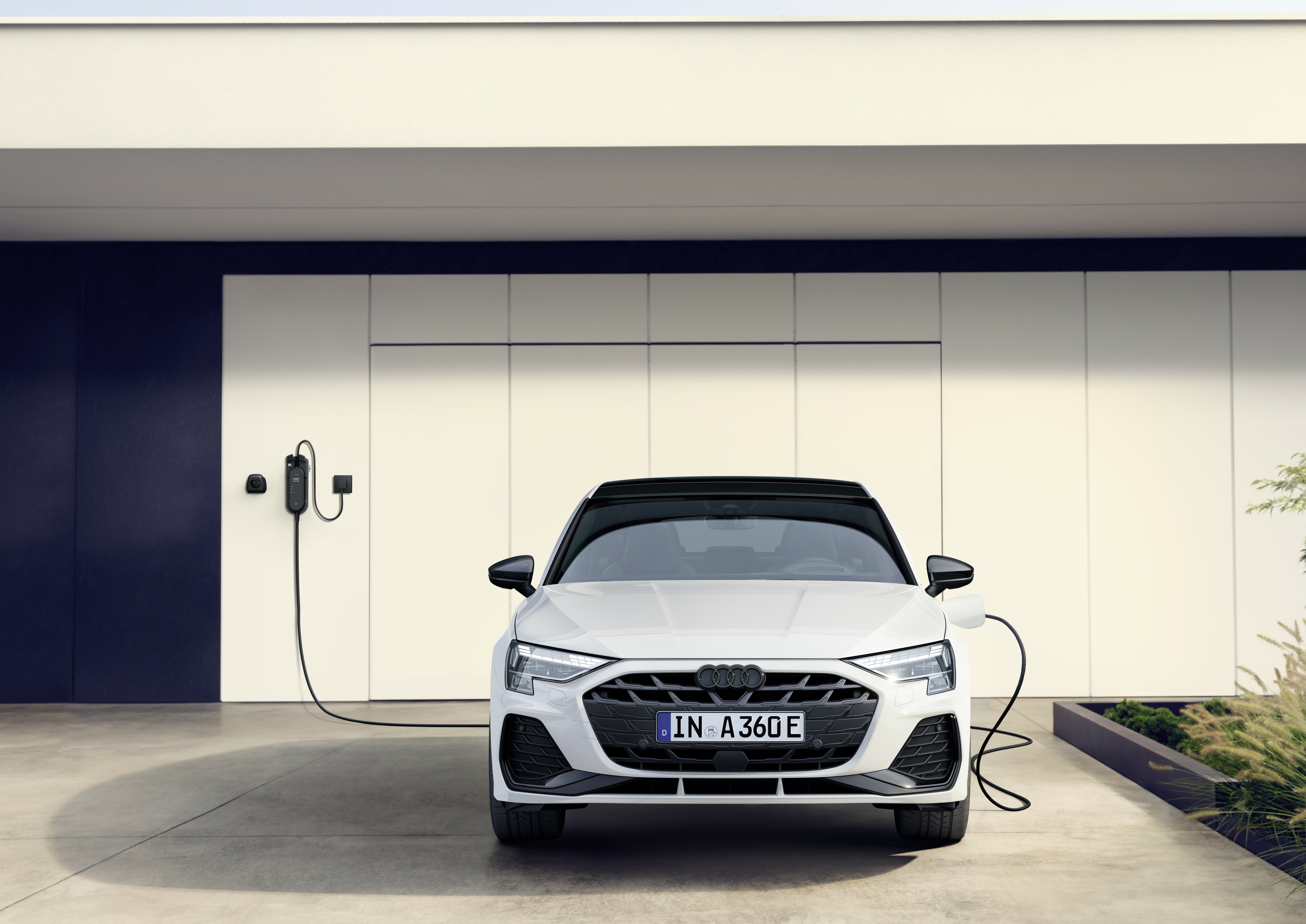
After Audi presented extensive upgrades for the A3 and S3 in the spring, the A3 Sportback 40 TFSI e now follows with a more powerful and efficient plug-in hybrid powertrain than before.
The new turbocharged petrol engine and the electric motor with increased power density are at the heart of the drive system. The 1.5 TFSI evo2 replaces the previous 1.4 TFSI and boasts a wide range of high-tech features. In addition to optimizing combustion chamber cooling, the combination of the turbocharger with variable turbine geometry and the Miller cycle, as well as the early closing of the intake valves, ensures a higher compression ratio.
The ratio is now 11.5:1, compared to 10:1 in the 1.4 TFSI. Thanks to this combustion process, the new unit operates with a high degree of efficiency, reducing fuel consumption and emissions. Injection takes place at a pressure of up to 350 bar. By comparison, the 1.4 TFSI reached a maximum of 200 bar. Plasma-coated cylinder liners reduce internal friction in the new engine. Pistons with cast-in cooling channels optimize combustion.
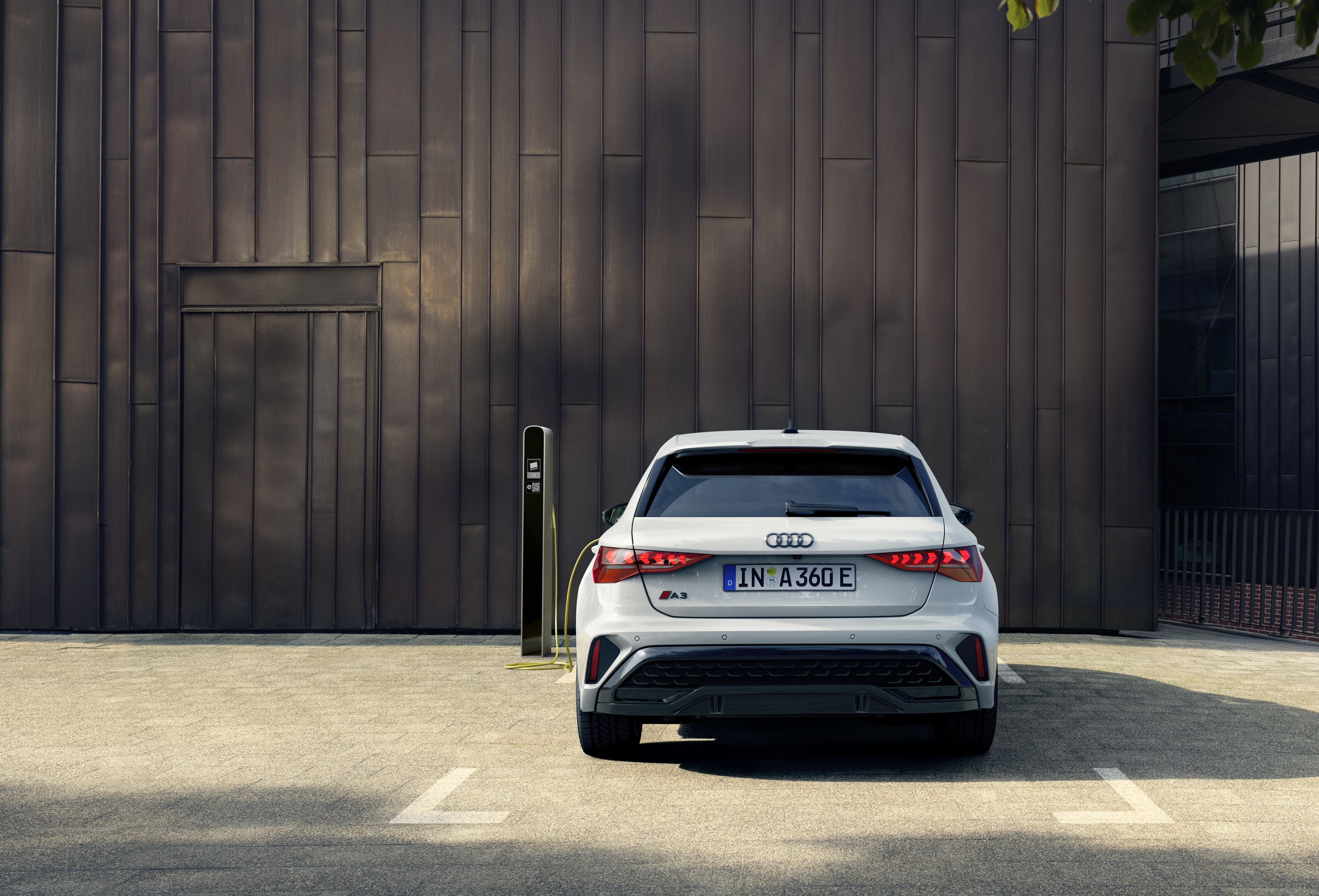
The electric drive is provided by a permanently excited synchronous motor, which now delivers 85kW (115PS). As with its predecessor, it is integrated into the housing of the six-speed S tronic, which is now equipped with a more robust gearbox bearing to cope with the higher system output.
It transfers the torque from the two engines to the front axle. The dual-clutch transmission has an electric oil pump that ensures the change of gears and oil supply even when the TFSI is temporarily deactivated.
Battery capacity and energy content of the HV modules doubled
The gross capacity of the high-voltage battery is now 25.7kWh and has, therefore, almost doubled with nearly identical physical dimensions to the predecessor model. The net capacity is 19.7kWh. Its 96 prismatic cells, which are divided into four modules, store almost 50 percent more energy than before. Thanks to optimized cell chemistry and better packaging, the charge quantity of the modules is now 73 instead of 37 ampere hours. The developers have thus increased the electric range to up to 88 miles on the WLTP cycle. A dedicated cooling circuit ensures the battery temperature is maintained in the optimum range.
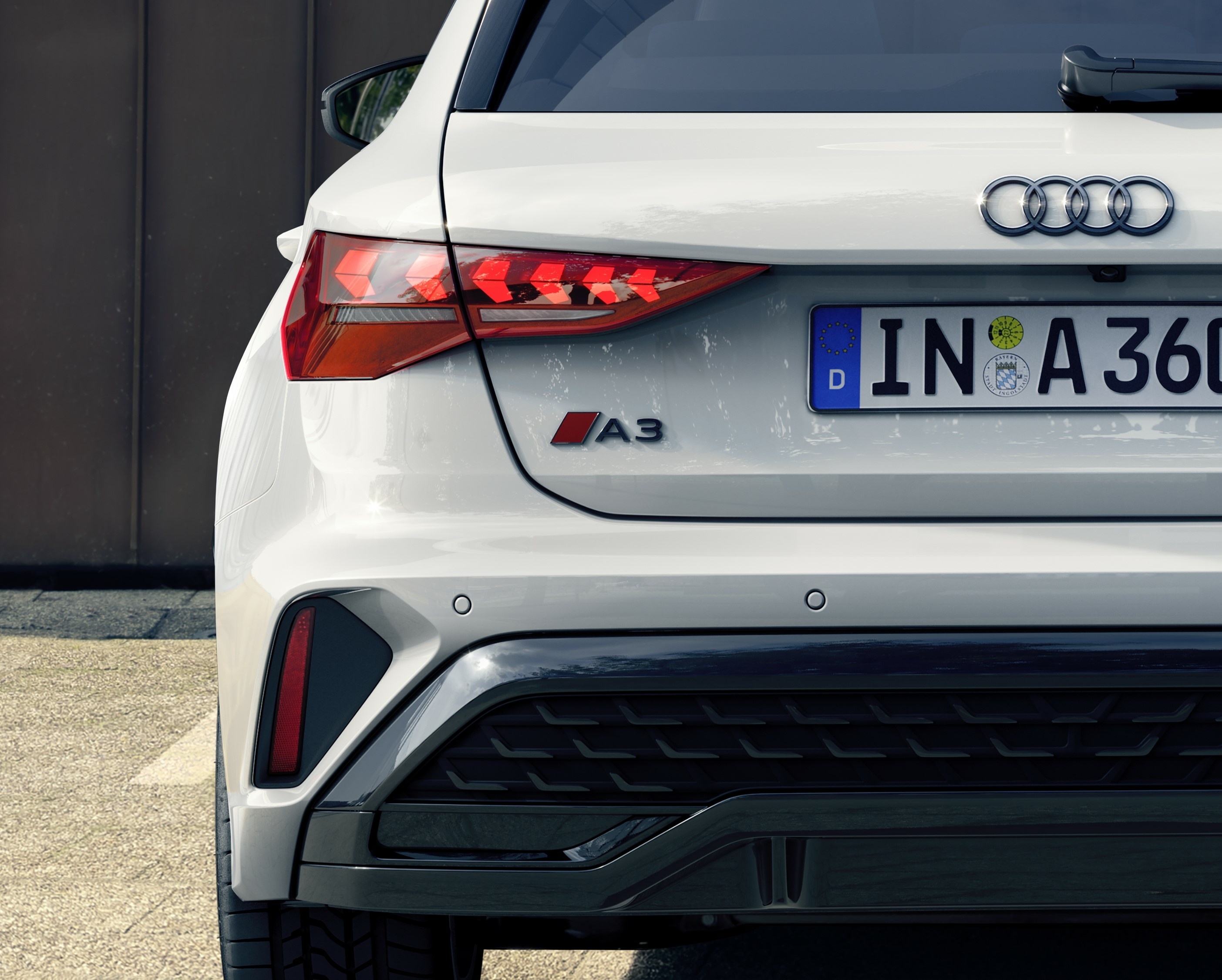
In the UK, the A3 Sportback 40 TFSI e (fuel consumption (weighted, combined): 706.2-941.6 UK mpg); CO2 emissions (weighted, combined): 9-6 g/km CO2) uses the latest 1.5-litre TFSI evo2 combustion engine, which has a power output of 150PS and 250 Nm of torque. Combined with the electric motor, peak power is 204PS and 350Nm. It means 0-62mph is possible in 7.4 seconds and on to a top speed of 140mph. The all-electric top speed is 87mph.
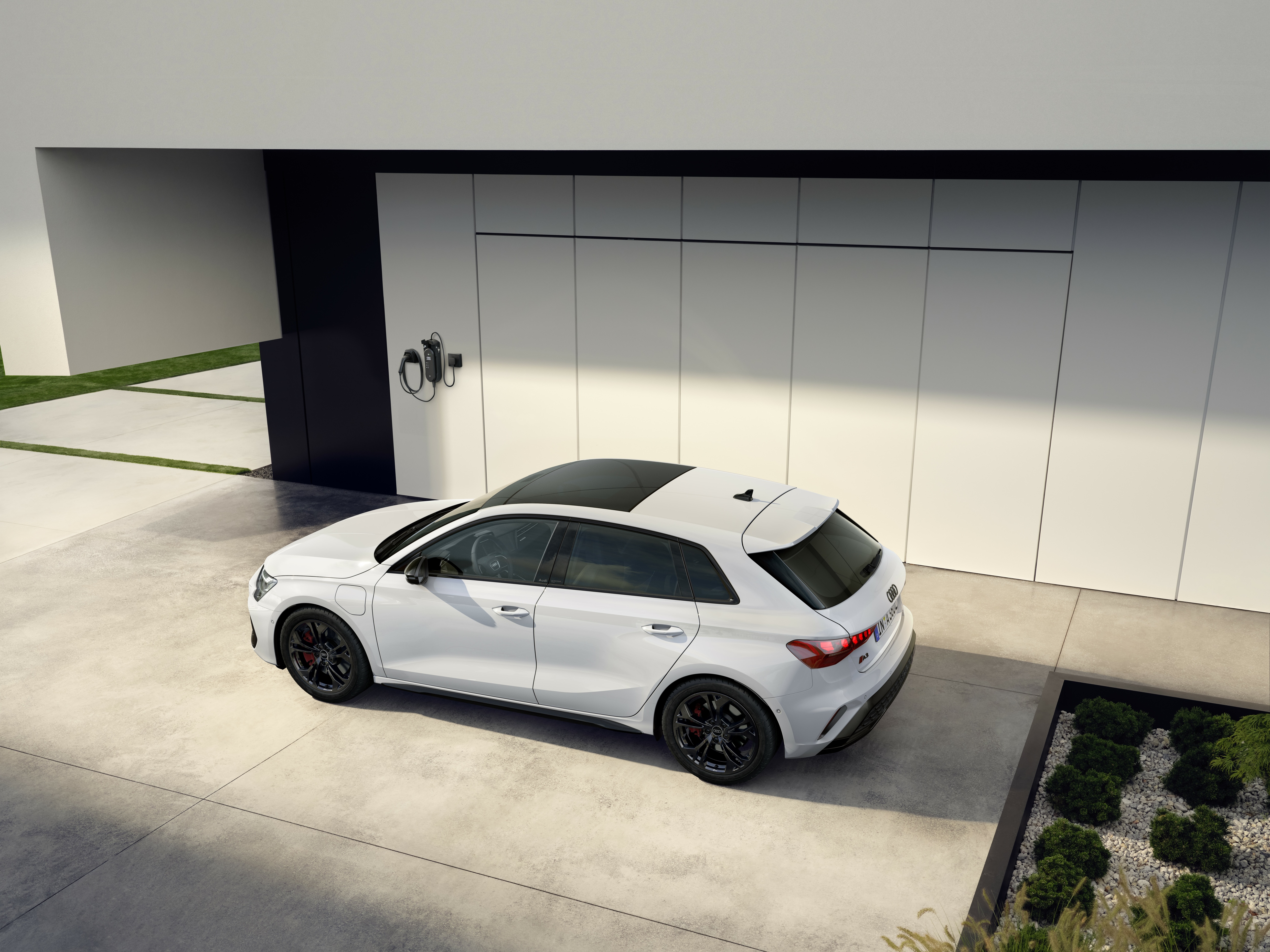
Intelligent drive management for maximum efficiency
The compact plug-in hybrid drive management is designed for high efficiency. Starting is always electric, even when the temperature drops down to -28° C. The driver can prioritize the electric drive with the EV button in the switch panel or by selecting it in the MMI, which enables the vehicle to operate like a fully electric model.
In "Auto Hybrid" mode, the primary operating mode, the combustion engine and electric motor share the work intelligently – purely electric driving at low speeds, with the TFSI engine taking priority at higher speeds and often both drives together. Depending on the situation, the A3 Sportback 40TFSI e can coast, recuperate – both in thrust and braking – or boost together with the electric motor and TFSI. In addition, the hybrid management system keeps the battery charge level constant to save enough electrical energy for later use, for example, in a low-emission zone.
Recuperation via the steering wheel paddles
When you take your foot off the accelerator pedal, the A3 Sportback 40 TFSI e coasts with the engines switched off, or the electric motor recuperates in overrun mode. This depends on the driving situation. When braking, the electric motor takes over the deceleration alone up to around 0.3 G and thus covers the vast majority of all braking processes in everyday driving.
The hydraulic wheel brakes only come into play when you step harder on the brake pedal. The transition is almost imperceptible, and recuperation remains active. When braking, the electric motor can recover up to 43kW of power. Like on Audi’s all-electric models, the steering wheel paddles are now used to control the degree of recuperation in EV mode for the first time. The optimum driving level is set in the background.
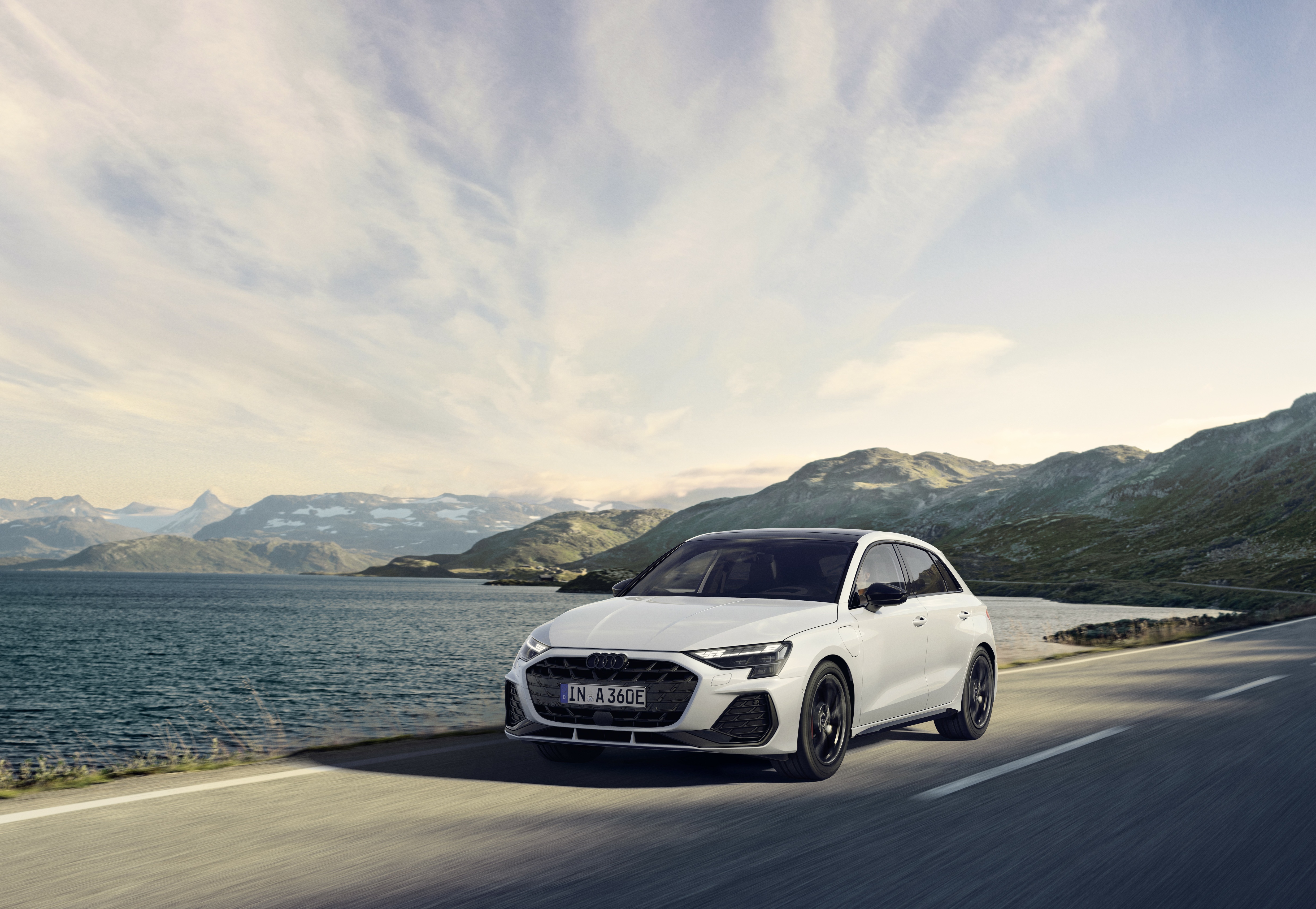
More power when boosting
The A3 Sportback 40 TFSI e reveals its sporty potential in shift program S of the dual-clutch transmission. In "Auto Hybrid" mode, the drive calls up the full system power and releases the boost power in acceleration phases during kickdown. This amounts to 40kW and is available for up to 15 seconds or even up to 18 seconds under optimum conditions.
DC fast charging function with up to 50 kW
For the first time, Audi is offering DC charging at fast-charging stations for a plug-in hybrid model. The A3 Sportback 40 TFSI e uses DC charging with up to 50 kW* and thus allows comfortable travelling with electric drive. This means a battery recharge from 10-80 percent can be achieved in less than half an hour.
In addition, it is possible to charge at AC charging points such as a wall box or municipal charging stations with three-phase charging at up to 11kW. The charging process takes 2.5 hours. The necessary Mode 3 cable is included as standard.
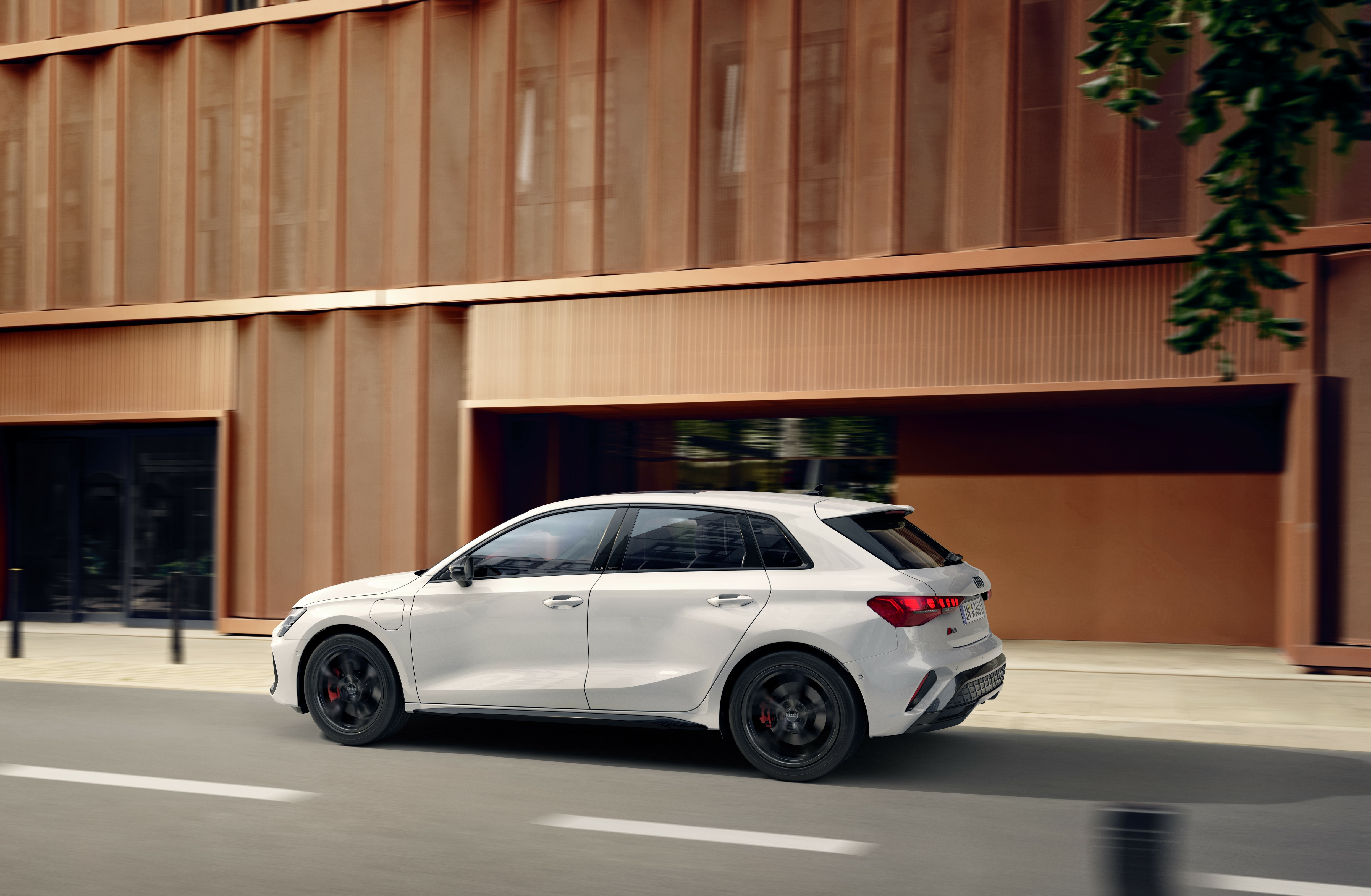
Specifically tuned chassis
Compared to the conventionally powered A3, the axle load distribution in the plug-in hybrid is slightly more rear-heavy, with 55 percent on the front axle and 45 percent on the rear axle. This is due to the lithium-ion battery, which is located beneath the rear seat bench. The suspension and dampers have, therefore, been specifically tuned. The combination of slightly increased spring rates and a somewhat sportier damping behaviour ensures high ride quality and dynamics in equal measure.
The electromechanical steering works sensitively and provides support depending on the driving speed. It offers a precise steering feel at high speeds, when parking the A3 Sportback 40 TFSI e feels very easy to handle. Progressive steering with a variable ratio depending on the steering angle is available as an option for an even more agile driving experience.
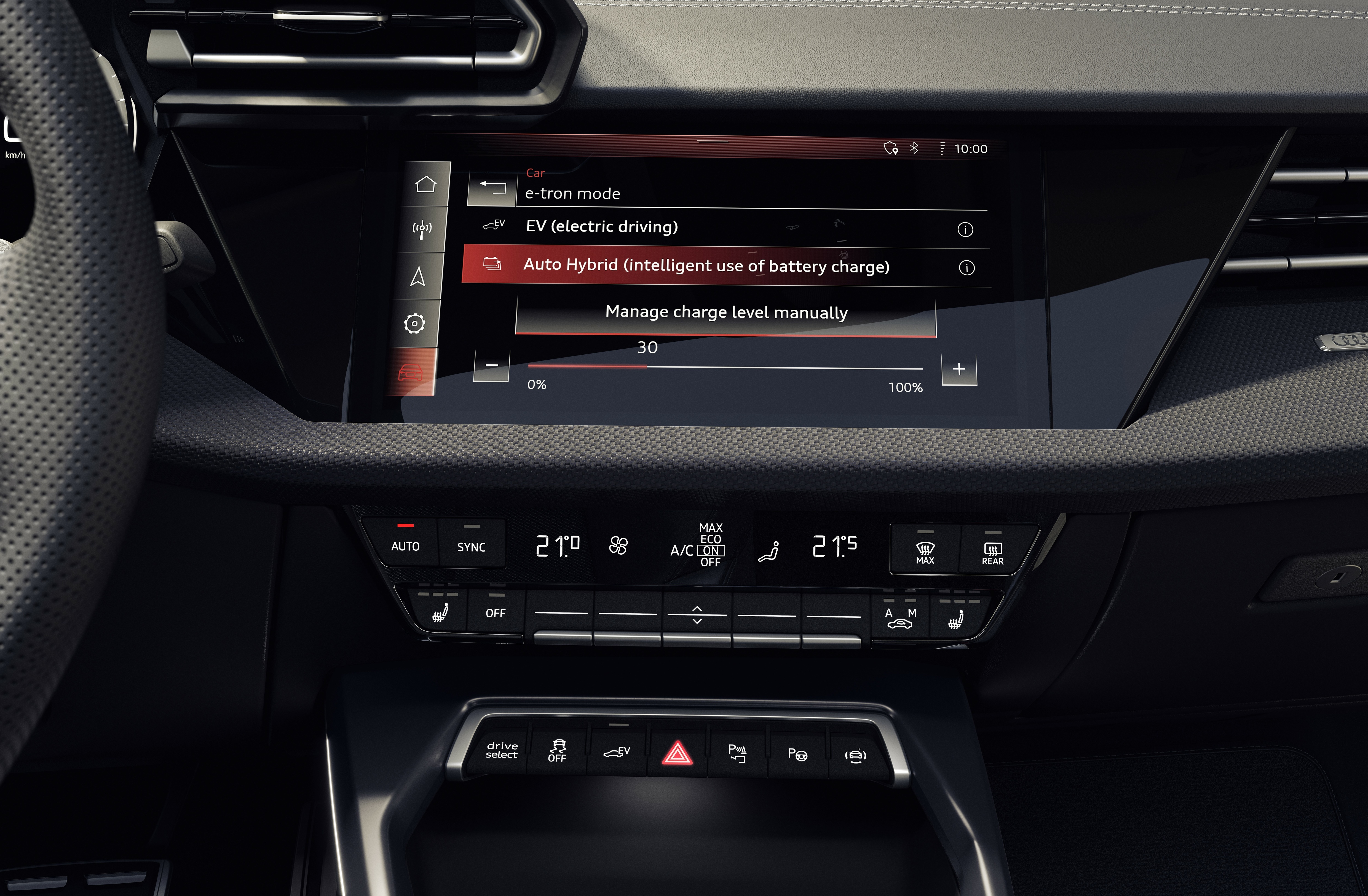
New functions and sporty equipment for the A3 TFSI e
The plug-in hybrid models benefit from the innovations introduced on the A3 at the beginning of the year: sportier styling, new design elements, and digital offerings. Extended standard equipment increases comfort, selectable daytime running light signatures, and the flexible addition of vehicle functions ensure a high degree of individualization.
Like the rest of the A3 lineup, the plug-in hybrid powertrain is offered in Sport, S line, and Black Edition specifications. As standard, it is equipped with 17-inch alloy wheels, the Audi drive select dynamic handling system and air conditioning as standard. Special displays provide information about the drive: the graphically revised power metre in the Audi virtual cockpit Plus shows the power currently being called up, the drive mode, the battery charge status, and the range. The MMI display also visualizes the energy flows.